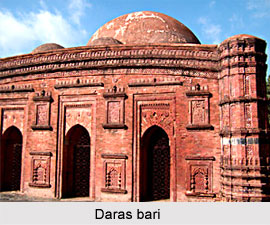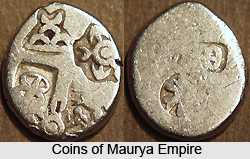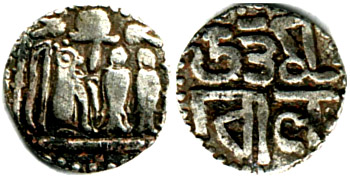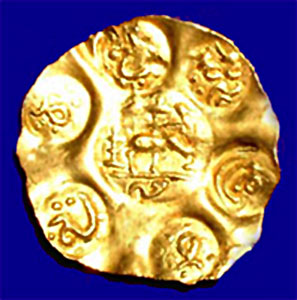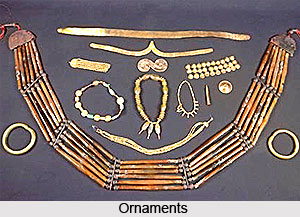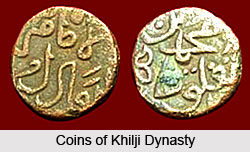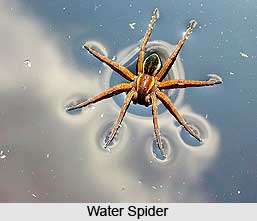 Water Spider or Pirate spider lives its entire life under water. Competition on land and the struggle for existence have been cited as contributory factors for certain Lycosids (Hunters) taking to a life in water. The water spiders are found in wells, ponds, tanks and rivers in India and can also live beneath the surface, breathing by means of a shining bubble of air which they carry entangled in the hair of their bodies. They construct a silken dome among water plants which they fill with air like a diving bell, carrying down bubbles from the surface. The spiders wait inside their domes for prey. In water, they feed not only on aquatic insects but also on small tadpoles and fish.
Water Spider or Pirate spider lives its entire life under water. Competition on land and the struggle for existence have been cited as contributory factors for certain Lycosids (Hunters) taking to a life in water. The water spiders are found in wells, ponds, tanks and rivers in India and can also live beneath the surface, breathing by means of a shining bubble of air which they carry entangled in the hair of their bodies. They construct a silken dome among water plants which they fill with air like a diving bell, carrying down bubbles from the surface. The spiders wait inside their domes for prey. In water, they feed not only on aquatic insects but also on small tadpoles and fish.
Water spiders do not possess any gills but they have developed a very clean mode of breathing under water. The spider spins a web on the surface of water and collects bubbles of air to make it full from underneath. It can then pops up below the created by it and breathe in air when it is required. The water spiders mates and lays its eggs in the air bubble web.
The female species of Water spiders construct the `diving bell` webs which are filled by air by them only for digesting prey, mating, molting and upbringing offspring. These spiders mostly spend their lives within the bells, coming out only to get hold of prey animals which touch the bell or get stuck to the silk threads anchoring it. However, Water spiders at times come out of water to regenerate their personal air supply and their webs. The male water spiders build bells, however, these are smaller in size and the males refill the oxygen supply of their bells less often. Males also possess a more alive style of hunting. Even if they are better swimmers than their female counterparts, they choose to clutch the underwater vegetation or silk threads while on their move.
It is a very unusual fact as far as spiders are concerned that the males of the water spiders are about thirty percent larger than their female counterparts, probably due to their more active style of hunting which wants more strength than the females to overcome water resistance and the stabilize the buoyancy of the male`s mobile air supplies. The female water spider`s sizes are limited by the quantity of energy they waste to construct and hold their large bells.
Apart from the true water spiders, there are some Argyopids, e.g. Orsinome marmoreal, which can remain within water for some hours. Orsinome marmoreal builds her web near waterfalls. If disturbed, she falls into the water and gets washed away. Reaching some rock or holdfast she clings to it and remains an inch or two below the surface of the water till the danger is over.


